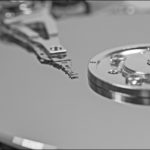RAID (Redundant Array of Inexpensive Disks) is the combining of multiple disks to mimic a single hardware storage device. Depending on the type, or “level”, RAID increases performance, capacity, and fault tolerance in some combination. So, what is RAID 50?
What is RAID 50?
Fifty is the new Five, okay, the new Five-O, or to be slightly more accurate–the new 0-5 as in RAID 0 striping across nested RAID 5 sub-arrays. Yes, the speedy but dangerous RAID 0 has found its margin of safety through the use of RAID 5 members rather than individual disks.
RAID 0 stripes data across multiple disks, or in this case, multiple nodes or sub-arrays. The nested RAID 5 arrays add fault tolerance by writing one block of parity data for each block of data. Parity blocks are distributed across all the disks in such a way that they never reside on the disk that contains the data they’re protecting.
What is Parity Info?
Parity information at its most basic level is a bit (binary 1 or 0) resulting from an XOR (Exclusive OR) operation between two bits of data. If both data bits are 1, or both are 0, then the resulting parity bit is 0. If the bits don’t match then the resulting parity bit will be 1.
Why XOR? Palindromic operation. If either of the original bits go missing, performing XOR on the remaining data bit and the generated parity bit results in the original value of the missing bit. E.g.,
- Create parity bit: 1 XOR 1 = 0
- Restore data bit: 1 (surviving data bit) XOR 0 (parity bit) = 1
- Create parity bit: 1 XOR 0= 1
- Restore data bit: 1 (surviving data bit) XOR 1 (parity bit) = 0
- Restore data bit: 0 (surviving data bit) XOR 1 (parity bit) = 1
The Upside
RAID 50’s strengths are speed and fault tolerance.
- Combines the speed of RAID 0 with the parity of RAID 5
- Every additional disk or RAID 5 node increases performance (to the limit of the transport technology)
- Every additional disk in the RAID 5 nodes increases capacity though you lose one drive’s worth of space for parity
- Every RAID 5 node can survive one drive failure
The Downside
It’s hard to really knock RAID 50 as it’s very fast and provides decent fault tolerance, however, it’s not for the paranoid.
- Only one drive failure per RAID 5 node can be tolerated (see RAID 60)
- The RAID 50 array will slow down slightly while a RAID 5 node is rebuilt
- Total capacity is always a multiple of the smallest RAID 5 node
- Requires six drives minimum
When to Use RAID 50
If you have six or more drives RAID 50 is a good way to increase the performance of RAID 5. Or if you prefer, a way to add fault tolerance to RAID 0. If you’re looking for even more fault tolerance, RAID 60 with its double parity is another option.










